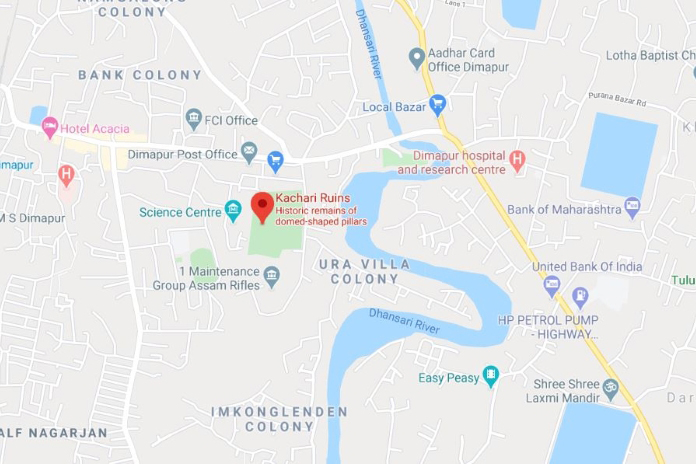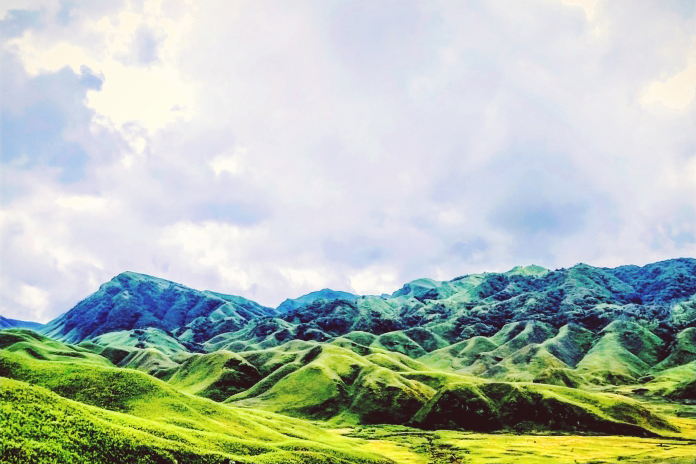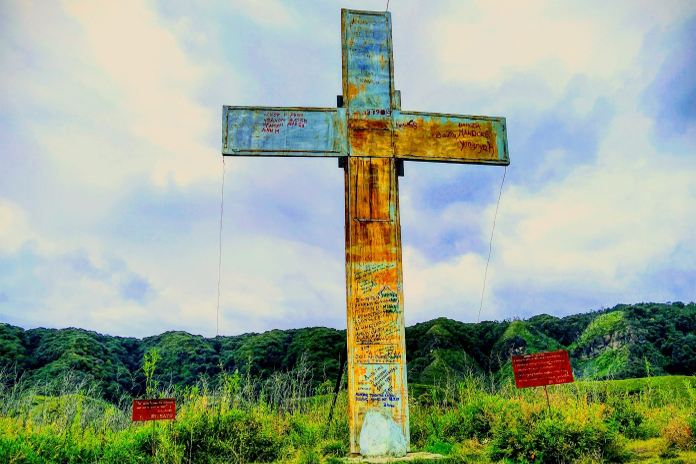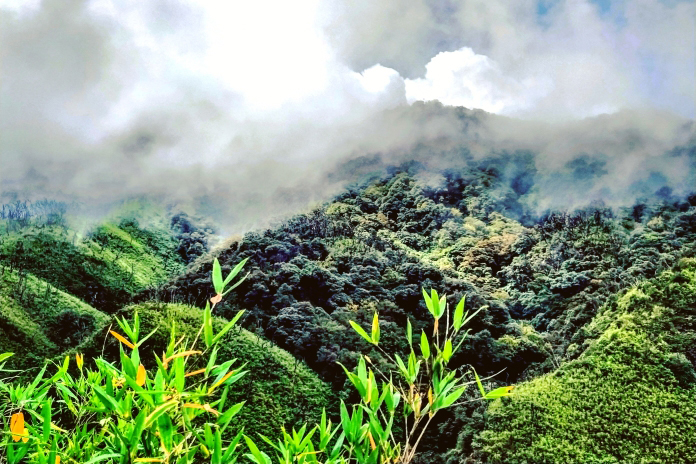The Kachari Ruins or Dimasa Kachari Ruins are located in the town of Dimapur. The origin and significance of these pillars are enveloped within the deep layers of time and history. The mysteries of these pillars draws the interest of historians as well as tourists, leading to the evolution of many theories.
Some pillars are completely glorified, while others have collapsed. It is often believed that here with the mushroom-shaped dooms, a game close to that of chess had been played. The Kachari Ruins of Dimapur withhold the splendor of the North East and our rich Indian heritage.
Architecture:
The Kachari Ruins in Dimapur are widely scattered throughout the terrain and are surrounded by the lush greenery of the overcrowded grass and weeds. The Government of Nagaland has stood by the installation of iron railings to protect the ruins against local vandalism.
You wouldn’t see any gigantic structures, but the stone ruins are quite unique in their own way. The individual pieces that make up the Kachari Ruins look much like lingas. From an aerial view, they seem to resemble chess pieces. The largest is a huge monolith, about 22 meters high.
“BEAUTY DOES NOT JUST LIE IN PERFECTION, IT ALSO LIES IN IMPERFECTION.”
These ruins are scarred and weathered by time, yet they behold our heritage and history. This makes them the true icon of pride and beauty.
Though they lost their original precision in time, these designs still represent the indigenous Aryan civilization. Lotus and flowers are the most common motifs. However, animal patterns, such as deer, elephants, and cows are also visible.
A man raising his arms to heaven as if in a celebration wearing a headdress is one of the most exquisite motifs.
Even in the repeated folds, you can view the beauty of the tasseled motifs. These ruins certainly deserve a visit and are known to attract artists and history fanatics. These ruins are cleaned and maintained by ASI.

The Kachari Ruins History:
The Kachari Ruins are a number of ruins located in Dimapur. Their history dates from the 10th century when they emerged in the civilization of Kachari. The Ruins of Kachari are a series of pillars of the mushroom. They were founded by the Kachari Kingdom, which ruled here in the 13th century AD, before the invasions by the Ahoms.
The kingdom of Kachari in medieval Assam was a mighty kingdom. Dimapur was the capital of the ancient dynasty of Kachari and in Dimapur, there are still relics of the great leaders. The Kachari kingdom’s sources are unknown. The leaders belonged to the Dimasa people, who belonged to the large ethnic community of Bodo Kachari.
The king, Tamradhaja, was invaded by Rudra Singha, the most powerful Ahom king in December 1706. Tamradhaja fled to Khaspur, defeated by King Ahom. From then on, the princes of Kachari settled with their court in Khaspur in the Cachar plains. It is believed that the devil Hidimba, wife of the Pandava Bhima had lived here. In memory of Hidimba, this kingdom was originally called the Kingdom of Hidimba.
On 24 April 1830, the last of the Kachari Kings, Raja Gobin Chandra, and some of his associates were killed at Haritikar in Cachar by a group of dissident individuals. Without natural heirs, the British conquered his empire under an agreement reached in 1826.
The foundations are not held well. The population and government have for a long time neglected the ruins. These ancient relics are safeguarded monuments yet left to be dilapidated. To join our hands and protect the heritage that has been passed along generations should be our priority.
Timings:
The Kachari Ruins open at 08:00 AM and close at 06:00 PM
Popular Things To Do:
The Kachari Ruins stand as a popular attraction and one can walk along and learn about its importance or its ancient archaeology. There is a market close by that represents the authenticity and marvel of the local cultures and customs. The local Nagas are likely to surprise you with their bizarre yet fascinating products. They can be as strange as worms in large bags that are sold for protein packs!
Also, you can be sure to visit several places such as Nagaland Science Centre, Triple Falls, Hong Kong Market, Nagah Shopping Arcade, Zoology Park, Rangapahar Reserve Wildlife, Shiva Temple, Diezephe Village, and many nearby ruins.
Best Time to Visit the Kachari Ruins Dimapur:
Winter is the best time to visit the place because you can enjoy the cool weather of the city. In all seasons except for the Monsoon months, you can enjoy this beautiful place, as the rainfall is heavy and is likely to foil your vacation.
How to Reach the Kachari Ruins Nagaland:
You can reach the Kachari Ruins easily as you can take cars or rental taxis from the center of Dimapur, from nearby towns and towns and by national bus. They are situated on the opposite side of the railways and you have to walk through a market until you get down at the bus stand. The ruins are just across the street.

By Air:
The closest airport to the destination is Dimapur airport. The Dimapur Airport is a mere 6 kilometers away from the great Kachari Ruins in Dimapur. From the airport it should be a simple 15 minute ride away.
By Train:
The nearest station to the destination is Dimapur Railway Station. The Dimapur Railway station is only 1.5 kilometers away from these beautiful ruins.
By Road:
A local taxi or car to reach the destination can be rented. Especially if one is already within the city limits, in which case it would be really easy to arrive here at the Kachari Ruins.
The Kachari ruins hope that you visit this destination full of rich history. Even as ruins, this architectural marvel depicts the finesse of the ancient architects. The Kachari ruins represent an architectural wonder of India that exhibits a wonderful lesson to us, and stands as a sight for everyone!
The Kachari ruins are heavily scarred and weathered by time, yet they behold our heritage and history. This makes them the true icon of pride and beauty.
Credits:
The Kachari Ruins photo at the top was provided by Rajarshi Ray. The Srikakulamads team thanks him for his great contributions. You can also check out his Instagram @rajarshi26












